Callithrix marmosets
The marmosets of the genus Callithrix, also known as tamarins, are small monkeys with a body length of about 25 cm and a long tail used as a counterweight.
All marmoset species of the genus Callithrix are omnivorous, feeding on fruits, flowers, exudates, small vertebrates and invertebrates. However, the common and black-tufted marmosets feed on exudates much more frequently than other species.1.
Marmosets are endemic to Brazil and live in the eastern and central-western parts of the country - in the Caatinga, the Atlantic Forest and part of the Cerrado2 3. The most common species can even be found in the green areas of large urban centers, such as parks and squares4.
There are six species, all with very similar behaviors and characteristics. Each species inhabits a different region of the country, but while some have spread across states, others are losing space and are increasingly threatened. See below which ones they are:
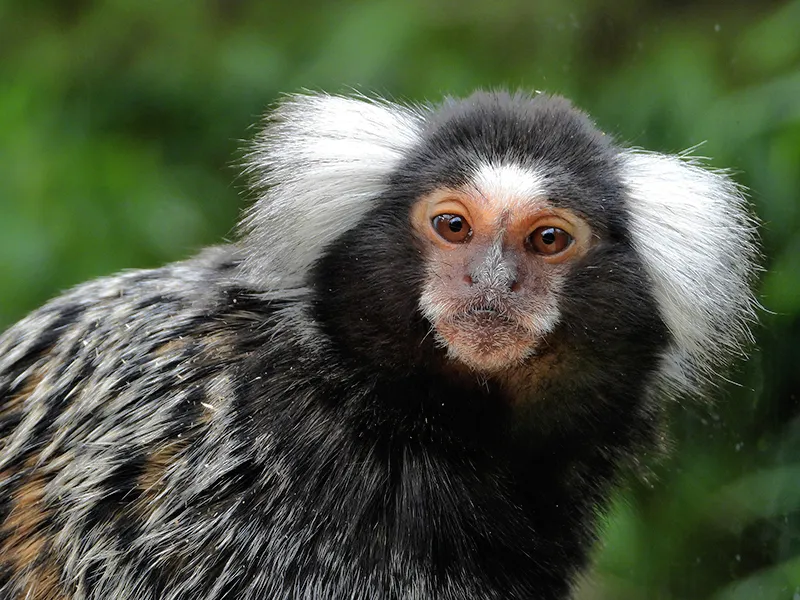
Common marmoset (C. jacchus): It is native to northeastern Brazil, but was introduced intentionally or unintentionally in several locations. Currently the species is found as far as Paraná, but its largest concentrations outside the Caatinga are in Rio de Janeiro and São Paulo.
They are easy to identify by their large tufts of white hair that come out of their ears, and their body is streaked with black and gray, with brown spots5.
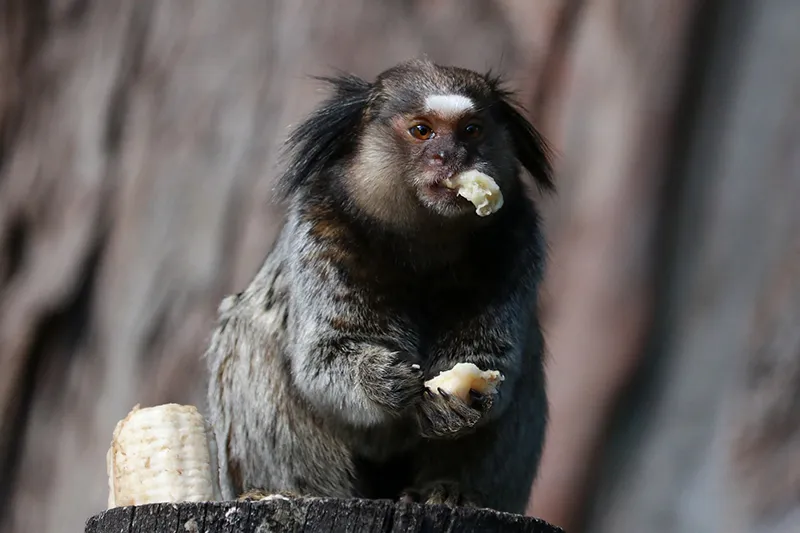
Black-tufted marmoset (C. penicillata): It is native to the Cerrado, but the species has been introduced elsewhere and is now found in much of the Atlantic Forest - especially in Rio de Janeiro and São Paulo. It is easily recognized by the black tufts on its ears.
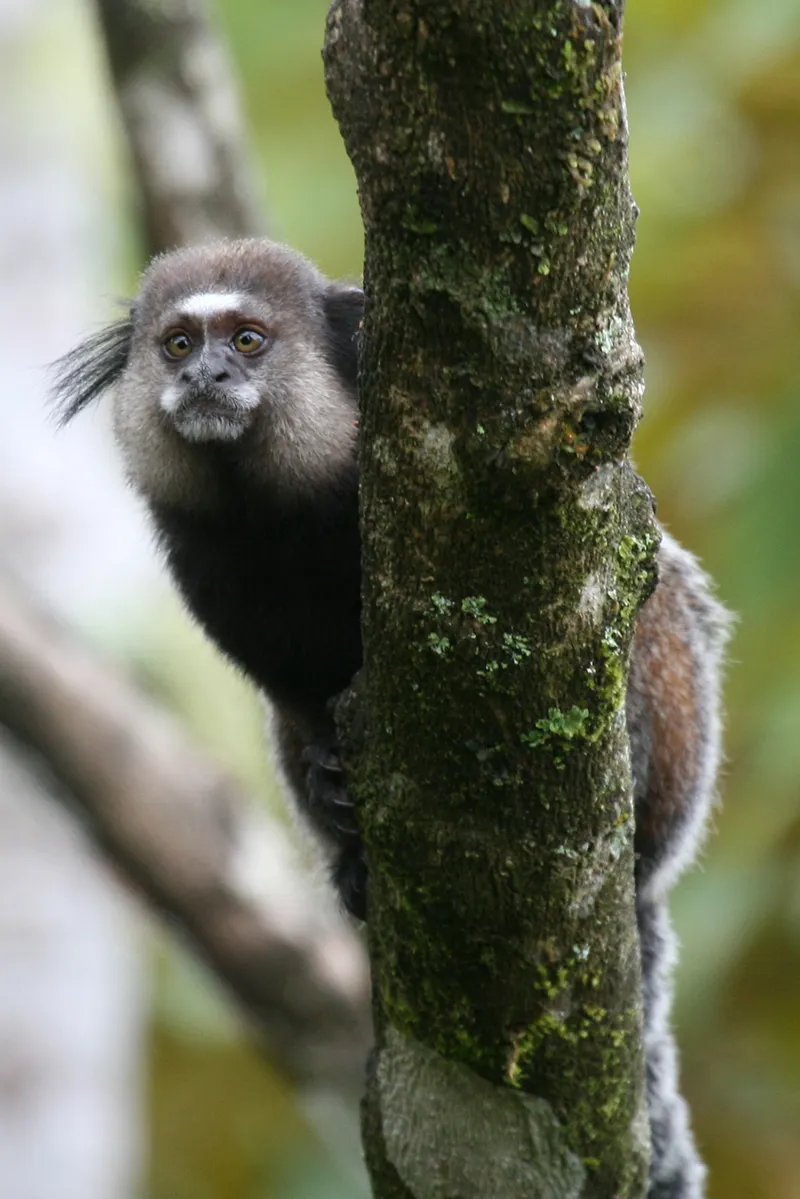
Wied’s marmoset (C. kuhlii): It is an endangered species and endemic to the Atlantic Forest. It occurs in the northeast of Minas Gerais and mainly in southern Bahia - in the Una Biological Reserve. It can be confused with the black tufa marmoset, but its tufts are less dense; its forehead and cheeks are lighter; its legs and belly are reddish and its paws are darker.6.
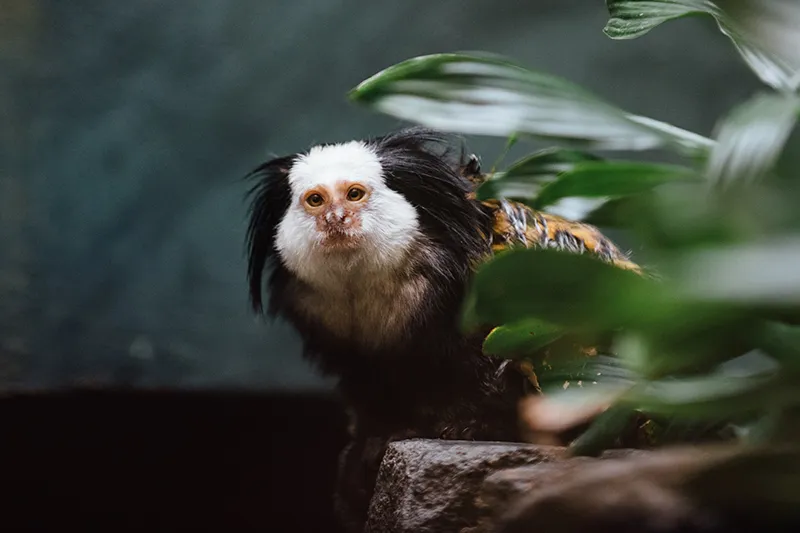
White-headed marmoset (C.geoffroyi): Also known as the Geoffroy’s marmoset has the white-headed marmoset is found in southern Bahia, eastern Minas Gerais and Espírito Santo. Although it is not a widespread species, it is not in danger of extinction. Its main characteristic is its white head, which makes it unmistakable.
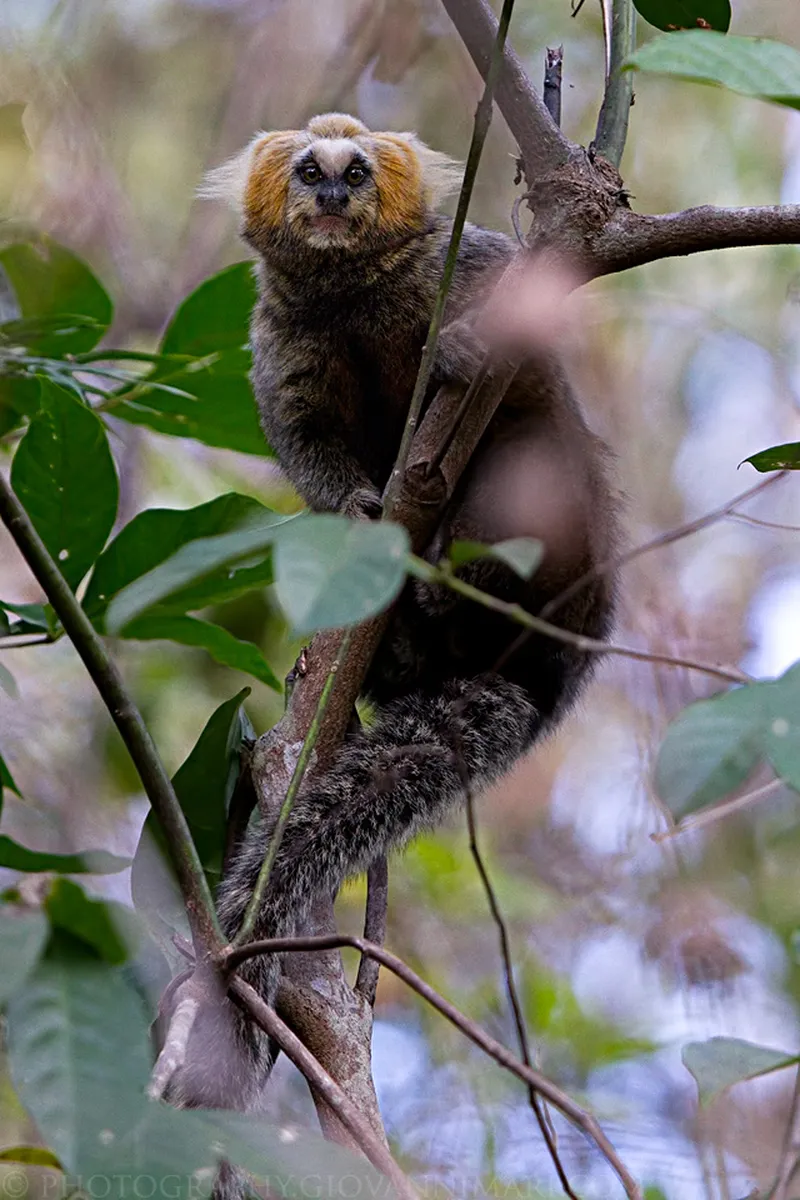
Wied’s marmoset (C. flaviceps): It is endemic to the south of Espírito Santo and a small part of eastern Minas Gerais. It is easily distinguished from other species by its lighter coat and yellowish head with black spots around the nose and eyes. Due to its small range, it is critically endangered and is one of the 25 most endangered primates in the world.7.
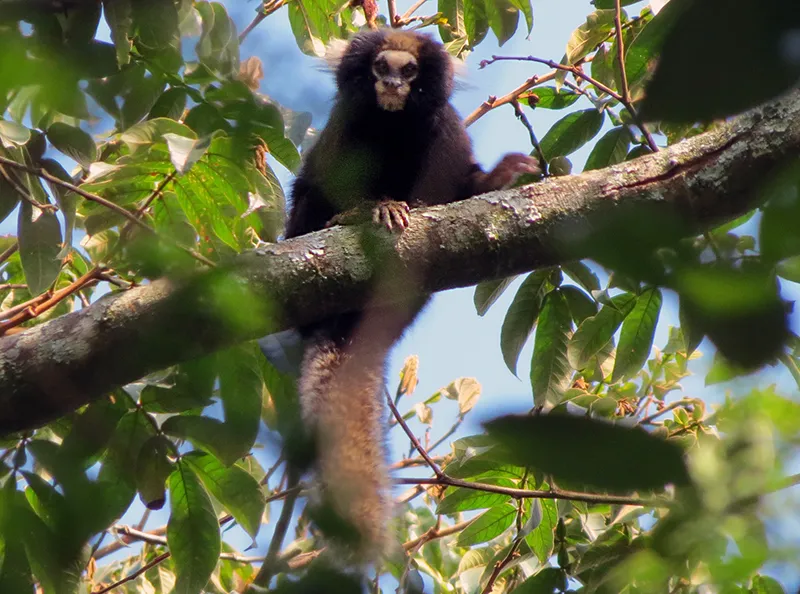
Buffy-tufted marmoset (C. aurita): Also known as the white-eared marmoset, it has a dark coat with red tones; it has yellow ear tufts and the top of the head. The Buffy-tufted marmoset is found in southern Minas Gerais, Rio de Janeiro, and eastern São Paulo. It is also an endangered species.
Hibridação
Each of these species inhabited different regions of the country, and even in the border regions - where different species might meet, they still lived separated by rivers, mountains, and other geographical barriers, so mixing between species was rare. However, animal trafficking and irresponsible release caused some species to be introduced where they did not originally occur, forcing native species to compete for space and resources.
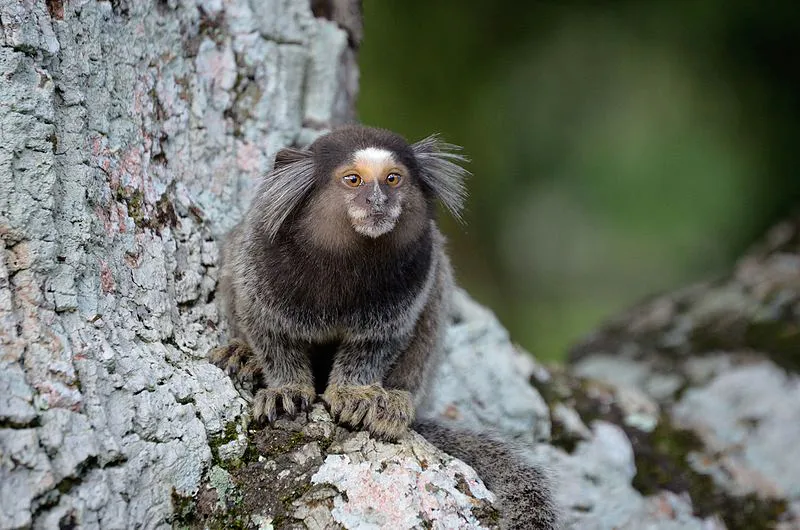
Due to this coexistence, the marmosets (Callithrix ssp.) began to breed with the exotic species, giving birth to hybrid and fertile offspring that can gradually wipe out the original species, bringing it closer and closer to extinction. In some municipalities of Minas Gerais, for example, there are no more Buffy-tufted marmoset, only hybrid marmosets7 8 9.
Threats and Conservation
In addition to hybridization, which is rapidly reducing the numbers of native species, marmosets are also the target of trafficking and trade as pets. Although they are popular animals, they become difficult to control as they age and are abandoned or killed10. Many also die before they are even sold, unable to withstand the terrible conditions in which they are hidden and transported from place to place.
Another major problem is deforestation. These species live in areas that suffer greatly from deforestation for agriculture and cattle ranching, causing their populations to decline or disappear in many areas.
Of the six species described, four are threatened to some degree, and some are found only in protected areas, such as the Buffy tufted marmoset and the mountain marmoset2 8. As if deforestation and trafficking were not enough, marmosets are also killed by roadkill, electrocution11 and disease - it is estimated that the mountain marmoset population has declined by 90%, largely due to a yellow fever outbreak in 200512.
For endangered species such as the Wied’s marmoset and the Buffy tufted marmoset to survive, it is necessary to create protected areas to maintain and increase native populations, in addition to controlling invasive species and the hybridization process. It is also necessary to focus efforts on environmental education at the expense of animal trafficking and the spread of invasive and hybrid marmosets.
As a way to contribute to the conservation of endangered species, the Centro de Conservação dos Saguis-da-Serra (CCSS) has developed the capture, castration and release of hybrid and invasive marmosets. In this way, the reproduction of hybrid and invasive species can be controlled and a suitable place for native species to thrive can be gradually created.7 8.
References:
-
Os saguis (Callithrix spp., erxleben, 1777) exóticos invasores na bacia do Rio São João, Rio de Janeiro: Biologia populacional e padrão de distribuição em uma Paisagem fragmentada. ↩︎
-
Rylands, A.B., Coimbra-Filho, A.F., & Mittermeier, R.A. (2009). The Systematics and Distributions of the Marmosets (Callithrix, Callibella, Cebuella, and Mico) and Callimico (Callimico) (Callitrichidae, Primates).DOI:10.1007/978-1-4419-0293-1_2 ↩︎
-
NICOLAEVSKY, Bertha. Distribuição geográfica e modelagem de habitat das espécies do gênero Callithrix (Primates, Callitrichidae) . 2011. 67 f. Dissertação (Mestrado em Biologia Animal) - Universidade Federal do Espírito Santo, Centro de Ciências Humanas e Naturais, Vitória, 2011. ↩︎
-
The IUCN Red List of Threatened Species — Common Marmoset Accessed on 04 April 2023 ↩︎
-
The Taxonomic Status of Wied’s Black-tufted-ear Marmoset, Callithrix kuhlii (Callitrichidae, Primates) ↩︎
-
O Eco — Os ameaçados saguis-da-serra e o embate genético entre os Callithrix ↩︎
-
MG.Biota — Novas ocorrências de Callithrix na Zona da Mata de Minas Gerais ↩︎
-
Global Wild Life — PRIMATES IN PERIL: The world’s 25 most endangered primates 2018-2020 ↩︎
-
Duarte-Quiroga, A. and Estrada, A. (2003), Primates as pets in Mexico City: An assessment of the species involved, source of origin, and general aspects of treatment. Am. J. Primatol., 61: 53-60. https://doi.org/10.1002/ajp.10108 ↩︎
-
The IUCN Red List of Threatened Species — Wied’s Marmoset ↩︎
-
The IUCN Red List of Threatened Species — Buffy-headed Marmoset ↩︎
